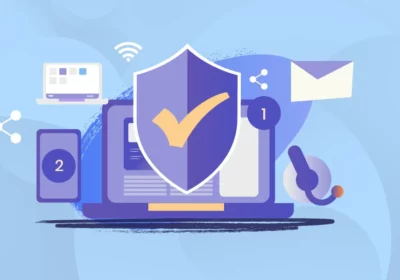In our increasingly digital world, the realm of cybersecurity is more crucial than ever. As individuals, organizations, and governments rely on the internet for a multitude of tasks, cybercriminals find new ways to exploit vulnerabilities. Understanding the types of cyber attacks is an essential step towards fortifying our online defenses. In this comprehensive guide, we will explore various cyber attack types, the methods employed by cybercriminals, and how to protect yourself from these threats.
- Phishing Attacks
Phishing attacks are one of the most common and widely known types of cyber threats. These attacks involve tricking individuals into revealing personal or sensitive information, such as login credentials, credit card numbers, or Social Security numbers. Phishing attackers often send deceptive emails that appear to be from a trusted source, urging recipients to click on links or open attachments. These links lead to fraudulent websites that steal personal data or spread malware.
Protection: Be cautious of unsolicited emails and verify the sender’s authenticity. Do not click on suspicious links or download attachments from unknown sources. Use email filtering tools to detect and block phishing attempts.
- Ransomware Attacks
Ransomware is a type of malware that encrypts a victim’s files, making them inaccessible until a ransom is paid to the attacker. Cybercriminals often demand payment in cryptocurrency to remain anonymous. Once the ransom is paid, they may provide the decryption key. Ransomware attacks can be devastating for individuals and organizations, causing data loss and significant financial losses.
Protection: Regularly back up your data and store backups offline to prevent ransomware attacks. Keep your software and security systems updated, and avoid downloading files or clicking on suspicious links.
- Malware Attacks
Malware, short for “malicious software,” encompasses a wide range of malicious programs designed to harm or exploit computer systems. This category includes viruses, worms, Trojans, spyware, adware, and more. Cybercriminals use malware to gain unauthorized access to systems, steal information, or disrupt computer operations.
Protection: Install reputable antivirus and anti-malware software to detect and remove malicious programs. Be cautious when downloading files from the internet or clicking on pop-up ads. Keep your operating system and software up to date.
- Denial of Service (DoS) and Distributed Denial of Service (DDoS) Attacks
DoS attacks overwhelm a system or network with excessive traffic, causing it to become slow or unresponsive. DDoS attacks, on the other hand, use multiple compromised devices to flood a target with traffic, making it virtually impossible to function. These attacks aim to disrupt services or websites and are often used for extortion.
Protection: Implement DoS and DDoS mitigation solutions, such as firewalls and traffic monitoring tools. Utilize content delivery networks (CDNs) to distribute traffic and reduce the risk of service disruptions.
- Man-in-the-Middle (MitM) Attacks
MitM attacks occur when an attacker intercepts and eavesdrops on the communication between two parties without their knowledge. The attacker may alter the messages or steal sensitive information during transmission. Common examples of MitM attacks include Wi-Fi eavesdropping, where attackers infiltrate unsecured Wi-Fi networks to capture data.
Protection: Use secure, encrypted connections whenever possible, such as HTTPS for web browsing. Be cautious when using public Wi-Fi networks, and avoid sharing sensitive information while connected to unsecured networks.
- SQL Injection Attacks
SQL injection is a type of cyber attack that targets vulnerable websites or web applications. Attackers input malicious SQL queries into input fields on websites to manipulate the site’s database and extract sensitive information. This can lead to data breaches, identity theft, or the compromise of an entire website.
Protection: Website developers should use prepared statements and parameterized queries to prevent SQL injection vulnerabilities. Regularly update your website’s software and security patches.
- Zero-Day Exploits
Zero-day exploits target undiscovered vulnerabilities in software, hardware, or operating systems. Cybercriminals use these vulnerabilities to gain unauthorized access or spread malware before the software or system’s developer becomes aware of the flaw. As a result, there are zero days to patch or defend against the attack.
Protection: Keep all software, operating systems, and hardware up to date with the latest security patches. Employ intrusion detection systems to identify unusual or suspicious activities.
- Social Engineering Attacks
Social engineering attacks manipulate individuals into revealing confidential information or performing actions that compromise security. These attacks exploit human psychology and often involve impersonation, deception, or manipulation. Common social engineering techniques include pretexting, baiting, and tailgating.
Protection: Educate yourself and your team about social engineering tactics and the importance of verifying the identity of individuals requesting sensitive information. Implement strict access controls and user training to reduce susceptibility.
- Advanced Persistent Threats (APTs)
APTs are complex and targeted cyber attacks launched by well-funded, organized groups or nation-states. These attacks are characterized by their persistence and the careful selection of targets. APTs often combine various tactics, such as spear-phishing, malware, and zero-day exploits, to gain long-term access to a target’s systems.
Protection: APTs require advanced security measures and vigilant monitoring. Employ network segmentation, frequent security audits, and threat intelligence services to detect and respond to APTs.
- Cryptojacking
Cryptojacking is a form of cyber attack where attackers compromise a victim’s device, such as a computer or smartphone, to secretly mine cryptocurrencies like Bitcoin or Monero. The victim’s device’s resources are used to perform mining operations without their consent or knowledge, causing slow performance and excessive energy consumption.
Protection: Install browser extensions or software that block cryptojacking scripts. Regularly monitor your device’s performance and look for signs of unusual resource usage.
- Email Spoofing
Email spoofing occurs when an attacker sends emails that appear to come from a trusted source but are actually fraudulent. These emails often aim to trick recipients into revealing personal information, transferring funds, or downloading malware.
Protection: Use email authentication protocols like SPF, DKIM, and DMARC to verify the authenticity of email senders. Be cautious when receiving unexpected emails requesting sensitive information.
- Internet of Things (IoT) Attacks
IoT devices, such as smart thermostats, cameras, and voice assistants, are vulnerable to cyber attacks due to their often lax security measures. Attackers can exploit these devices to gain access to a network or use them in larger-scale attacks.
Protection: Change default passwords on IoT devices and keep their firmware updated. Segment your network to isolate IoT devices from critical systems.
Conclusion
The landscape of cyber attacks is vast and continually evolving as cybercriminals devise new and sophisticated tactics to exploit vulnerabilities. Understanding the various types of cyber attacks is essential for protecting yourself, your organization, and your digital assets. By staying informed about these threats, implementing robust security measures, and being vigilant in your online activities, you can significantly reduce the risk of falling victim to cyber attacks. Remember that cybersecurity is an ongoing process that requires continuous awareness and adaptation to stay one step ahead of cybercriminals.



